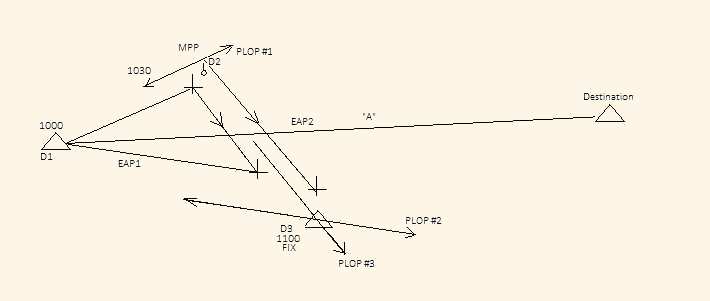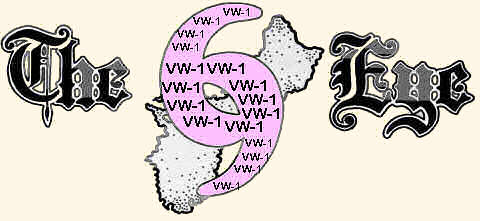
pressure pattern fixing
by Major William C. LUM, USAF
re-printed from THE NAVIGATOR
Imagine, if you will, a situation in which an overcast and an undercast are present throughout a flight over the ocean. Add to this the absence of electronic aids such as doppler, loran and consol. Under these circumstances accurate positioning becomes a problem, for dead reckoning (even when aided by pressure lines of position) tends to deteriorate with the passage of time.
Unfortunately, situations of this type all too often lull the navigator into believing that sooner or later a break in the clouds will afford him an opportunity to use celestial. By the time a break does come, he may find himself a hundred or more miles off course, within an ADIZ or prohibited area, or buying some similar violation. Such misfortunes can be avoided, however, by using pressure lines of position for fixing rather than MPPs.
The technique to be employed simply utilizes two or more PLOPs after the initial two readings have been taken. In the illustration, the 1000 position is used as the coasting-out fix. The intended track is represented by line A.
At 1030 a PLOP is plotted and a DR position used to establish an MPP. A change in heading is made at this time so that the 1100 position will fall on the opposite side of the initially intended track. From the 1030 air position, plot an air position for 1100. Draw the effective air path between this 1100 position and the 1000 fix, and then plot the 1000 to 1100 PLOP. Next, starting from the 1030 MPP, plot another air position for 1100. Draw the effective air path between these two positions and plot the 1030 to 1100 PLOP. The intersection of this PLOP with the 1000 to 1100 PLOP provides a bona fide fix.
Presented in its simplest form, this fixing procedure consists of plotting the D3-D1 PLOP agains the D3-D2 PLOP. Admittedly, I recommend making an initial displacement of the aircraft to either side of track. Since pressure systems tend to move, effective air paths should not extend beyond one hour in duration. When used properly this PLOP fixing technique will result in fairly accurate fixes.

